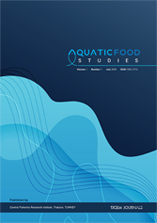Horticultural Studies (HortiS)
2019, Vol 36, Num, 2 (Pages: 217-227)
Determination of spreading spring greenhouses areas on different physiographical units with remote sensing and GIS techniques: A key study from Elmalı/Antalya
2 Eskişehir Osmangazi Üniversitesi Ziraat Fakültesi Toprak Bilimi ve Bitki Besleme Bölümü, Eskişehir DOI : 10.16882/derim.2019.614303 Viewed : 3129 - Downloaded : 1881 One of the uncontrolled and very fast spring cultivation activity areas in the recent years is found in tectonickarstic depression of the Elmalı district of Antalya province in the western part of the Taurus Mountain Range. The main aim of this study is to determine temporal and spatial changes in the spreading of the greenhouse areas on three different physiographic units in the Elmalı Depression. Here in the Eskihisar region, Pansharped satellite name and spatial resolution in 2009 and 2016 respectively, GeoEye-1 0.5 m and WorldView-3 0.4 m, in the Gölova-Çukurelma region with 0.6m GeoEye-1 satellite images with 0,5m and finally, in the Beyler region, 0.5 m WorldView-2 and Spot-7 1.5 m satellite images were used. As a result of the classification made with Maximum Likelihood technique which is one of the controlled classification techniques, the total greenhouse assets calculated from the raster data were compared with the total greenhouse assets calculated from the data obtained by the terrestrial measurements, the accuracy of the study was calculated. Physiographic units and greenhouse production areas are respectively 126.19 ha in the Eskihisar region on alluvial land, 104.41 ha in GölovaÇukurelma area, which contains very old lake base and alluvial fan, and finally, 38.23 ha in the Beyler area on the land of the basement. When the percentage increase in greenhouse activities is evaluated as time dependent, the highest increase is in Gölova-Çukurelma region (313.51%), second in Eskihisar region (166.27%) and the lowest increase in Beyler region (61.35%). When the accuracy rates of the study are examined, the highest accuracy of the year 2009 (94.83%) in the Eskihisar region, in 2016 (92.04%), Gölova-Çukurlema 2008 (89.33%), the lowest accuracy in 2016 (83.52%) in the Beyler region in 2011 (87.72%) in 2016 (83.95%). Keywords : Remote sensing; Geographic information system; Physiography; Supervised classification














